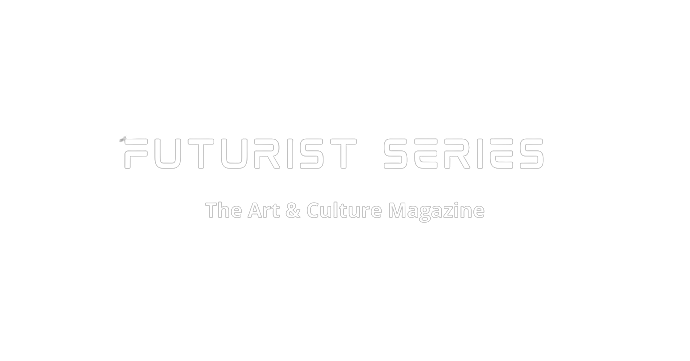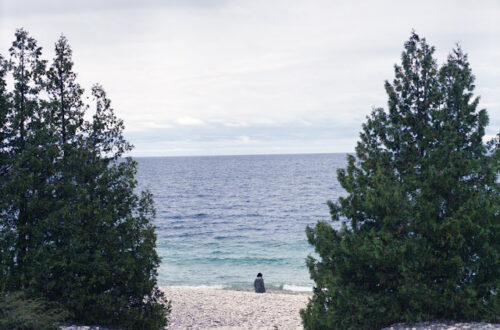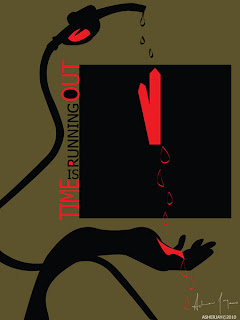
Q & A with Artist Asher Jay: The Maui Dolphin: A Survival Plea for a Sentient Species
55 and Counting by ©Asher Jay 2012, an original work created to raise awareness about the dwindling count of Maui Dolphins in New Zealand’s waters. www.asherjay.com
William Trubridge, a World Champion Free Diver, is the ambassador for the smallest and rarest cetacean species, the Cephalorhynchus hectori maui. He is presently spearheading a strong campaign against negligent fishing practices with high by-catch mortality rates. Trawling and gill nets have brought Maui Dolphin numbers from 111 in 2005 to an alarmingly meager population of 55 in 2012. With only 20 females left in the wild, it has become apparent that drastic measures need to be instituted to save this sentient species from being wiped off the face of this planet.
Asher Jay: How has the response been to your relentless efforts to raise public awareness and garner the support of individuals both locally and globally?
William Trubridge: Thanks to NABU International, The NZ Whale and Dolphin Trust, Forest and Bird, WWF and other NGOs, there has been an incredible surge of support in favour of increased measures to protect the critically endangered Hector’s and Maui’s Dolphins. Thousands of letters have been sent to the Prime Minister and Ministers of Conservation and Primary Industries, not just from concerned New Zealanders but also from people the world over, who are watching on and frowning at such a display of political apathy.
AJ: Has this translated effectively into policy change? Have the ministers in charge of the fishing industry stepped up and enforced the necessary restrictions to help conserve this critically endangered species?
WT: These ministers have the legislative authority to change fishing regulations overnight in order to prevent further mortalities in the species, and so far they have only mentioned a possible enlargement of protected areas in two months time, following review of public submissions.
It’s a common tactic in politics to try and ride out a wave of public commotion by of stalling and deferrals of this kind. The NZ government needs to know that in the case at hand it will not work. Further procrastination from taking the only adequate measure (immediately banning gill-nets and trawling from the dolphin’s entire range) will only cause the complaints to escalate. Each day this issue is in the international press NZ’s image as ‘clean green’ or ‘100% pure’ is further debunked, and this will have direct consequences on NZ’s tourism industry, which represents 12% of the country’s income (as opposed to the fishing industry’s 1%).
AJ: What gives you hope that this problem will not be carpeted like so many other ecological concerns of our time?
WT: The reason this issue will not, like some other issues, go away or stagnate is that we are dealing with a species that is teetering on the precipice of extinction. With a population of 55, one or two more by-catch fatalaties could push Maui’s Dolphins past the point of no return. There is no come back from extinction, and if the ministers in whose hands the fate of this species rests can’t be moved into action by this harrowing prospect, then they could at least think with their fiscal balances and realise that being the first country in the world to annihilate a marine dolphin might take a chunk out of our tourism income that would be bigger than the entire yearly revenue from all types of fishing in all NZ waters.
AJ:When did you get involved? How do you intend to mobilize the politicians to address this critical crisis?
WT: For the last two years I’ve been involved in a campaign to protect New Zealand’s endemic dolphins, the Hector’s and Maui’s Dolphins. Recently the situation with the latter species has become drastic, with only 55 individuals left, and this, coupled with the government’s continued stonewalling and stalling of the issue has meant that the campaign has become more urgent. If those who are able to change the legislation to protect the dolphins don’t have the moral common sense to do so then we must talk in their language, and show that the loss of a species (and what would be the first human-induced extinction of a marine dolphin) would be the bane of New Zealand’s tourism industry and would tarnish the international brand image it is founded on (“100% Pure”).
AJ: What propels you to be so passionately invested in the conservation of the Maui Dolphin?
WT: As a freediver I feel a close affinity to dolphins. It’s clear from my own experiences, and from the way they are known to protect swimmers from sharks or interact with snorkelers and surfers, that these mammals reciprocate this kinship. Intrinsically it’s impossible to argue that anyone species is more valuable than another, and it’s true that we anthropomorphize dolphins a lot and are fond of them in part for their unfailing smile and playful mirth. However, they are also the most intelligent order of beings after man, and offer us not just another statistic of biodiversity, but also a chance to learn about ourselves through the ineluctable inspiration that is granted just by being in the presence of creatures in such perfect harmony with their world.
Should we lose such a rare example of the life’s wonders for ever it would be a black mark on our name as stewards of this planet. The first and only dolphin to become extinct so far due to human influence was a fresh water dolphin: the Yangtze River Dolphin. While they inhabited a tiny stretch of water in the most populated country of the planet (still no excuse for their extinction of course), the same can not be said for New Zealand’s Dolphins. It is only through the rampant greed and malpractice of a government-pampered fishing industry that their species have been strangled to close to extinction. The imperative and only course of action is incontestable: trawling and gill-netting must be made illegal across the dolphins’ entire territory. Should the government be uncertain of the exact territory then all areas under suspicion must be protected until it can be proven that dolphins aren’t found there. Benefit of doubt must be given to a crippled species, not to a belligerent fishing industry.
AJ: How can people help you advance your crusade?
WT: I will not be content until this course of action has been implemented. It will give me further inspiration to dive deeper, to break more records, and with each press interview that follows, I intend to use the publicity to further expose the moral vacancy of a government that promotes its country as “100% pure” while acting as an accomplice in the speciocide (one step worse than genocide) of Hector’s and Maui’s Dolphins.
I would request everyone to sign this submission now before another dolphin is lost to indifference: https://www.change.org/petitions/maui-s-dolphin-submission and to participate in the “Lets Face It” visual petition by logging onto this website: http://www.lets-face-it-dolphins.com/let-s-face-it
“This is just a little “sneak peek” image composite dedicated to the KAPAI KIDZ and dear friend Linda Gideon-Robinson who has rallied these beautiful children to put a face to the need to save the critically endangered Maui’s & Hector’s Dolphins from extinction.
All 3 banner/posters will be presented to the New Zealand government in about a week’s time.
.•*✮☆But its not over yet!
Help us make an even greater impact by reaching our goal of 5,000 “Let’s Face It” Visual Petitions (VPs) by mid-April. We’ll be submitting our statement via e-mail with a link to the “Let’s Face It” Visual Petitions page to the New Zealand government which is accepting public comments before April 14, 2012.” – Origami Whales Project
Death by Dreamcatcher by ©Asher Jay 2012, an original artwork created to raise awareness about the dwindling count of Maui Dolphins in New Zealand’s waters. www.asherjay.com
For more facts and information on Maui Dolphins kindly click here.
I had the real pleasure of connecting with Barbara Maas, a biologist who has been working intimately with this issue for over ten years now, and has only seen it gain momentum in the past six months. Here are her thoughts on this captious cause:
“Hector’s and Maui’s dolphins have been picked off one by one by gill and trawl nets for over three decades. Because they are a little known species, few people are aware of the tragedy that is playing out off New Zealand’s coast. It just doesn’t sit well with New Zealand’s self-image and the perception of the country abroad. But is is true nonetheless.
Anonymity has been a killer for these amazing but forgotten animals because people who don’t know, can’t care about whether they are there or not. That’s why building awareness and a strong, global lobby for them is so important. And we’re getting there – finally – after years of shouting for help.
We – and by ‘we’ I mean all of us – have a unique opportunity to right a monumental wrong that is inflicted on these beleaguered animals. And from what I’ve learned from working on this issue for the past 11 years, Maui’s and Hector’s dolphins won’t make it without our help. Please get involved, find out more about them and learn to love and care about them by visiting our website: www.hectorsdolphins.com
One thing’s for sure. What happens to Hector’s and Maui’s dolphins will say a great deal more about our own species than about theirs.” – Barbara Maas
Email John Key the minister and emphasize the need to ban gill-nets and trawlers in NZ’s waters: j.key@ministers.govt.nz SPREAD THE WORD! …
Note to readers:
The html link to this article page has a typo on Survival that I am unable to fix. I am truly sorry about this error. If anyone knows how to edit this, do leave a comment with instructions. – Asher Jay






